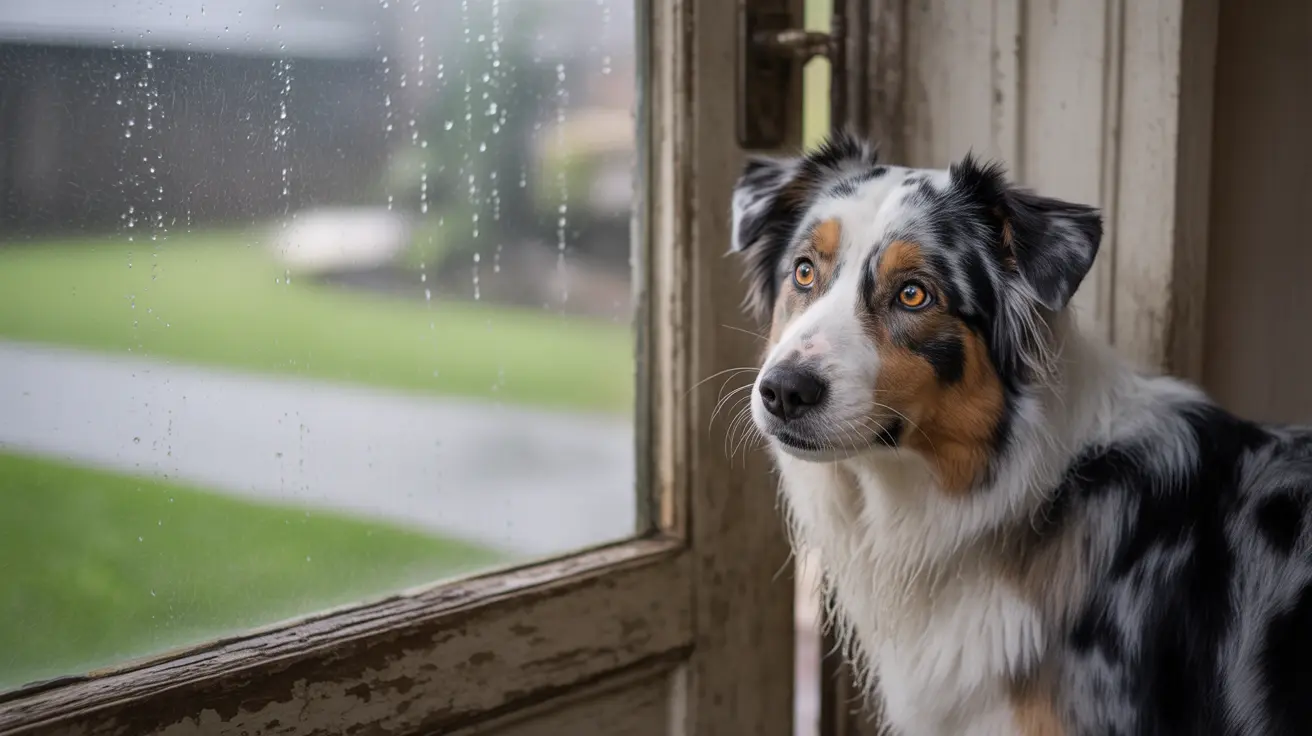If your dog suddenly refuses to go outside or shows reluctance during walks, you're not alone. This behavior change can be concerning for pet parents, but understanding the underlying causes is the first step toward helping your furry friend overcome their outdoor anxiety. Let's explore why dogs may resist going outside and what you can do to help them feel more comfortable.
Common Reasons for Outdoor Reluctance
Fear and Anxiety Triggers
Dogs often develop outdoor anxiety due to specific triggers such as loud noises, unfamiliar environments, or past negative experiences. Construction work, traffic sounds, fireworks, or even the presence of other animals can create lasting fear responses that make your dog hesitant to step outside.
Weather-Related Concerns
Many dogs are sensitive to weather conditions, showing particular reluctance during extreme temperatures, thunderstorms, or heavy rain. Some breeds are especially susceptible to weather-related stress, and even previously enthusiastic outdoor dogs may become hesitant during challenging weather conditions.
Medical Issues That May Cause Outdoor Avoidance
Sometimes, a dog's unwillingness to go outside stems from physical discomfort or health problems. Common medical causes include:
- Arthritis or joint pain
- Paw pad injuries or sensitivity
- Vision or hearing loss in older dogs
- Underlying illnesses affecting mobility
- Recent surgery or injury recovery
Environmental and Behavioral Factors
Changes in Routine or Environment
Dogs thrive on consistency, and changes in their environment or daily routine can trigger outdoor anxiety. This might include:
- Moving to a new home
- Construction in the neighborhood
- New neighbors or neighborhood pets
- Changes in walking schedule or route
- Different walking partners
Past Experiences and Training
Previous negative experiences can significantly impact a dog's willingness to go outside. This might include:
- Traumatic encounters with other animals
- Negative experiences with training tools
- Frightening events during walks
- Insufficient early socialization
Solutions and Training Approaches
Positive Reinforcement Techniques
Building positive associations with outdoor spaces is crucial for helping your dog overcome their fears. Use high-value treats, favorite toys, and gentle encouragement to make the outside world more appealing. Start with short sessions in quiet, controlled environments and gradually increase exposure to more challenging situations.
Creating Safe Spaces
Establish comfortable transition areas between indoor and outdoor spaces. This might include:
- A covered porch or patio
- A familiar route for initial walks
- Quiet times of day for outdoor activities
- Protected areas away from triggers
Frequently Asked Questions
Why does my dog suddenly refuse to go outside even though they used to enjoy walks?
Sudden changes in outdoor behavior often result from recent negative experiences, health issues, or environmental changes. Have your veterinarian rule out medical causes first, then consider recent events that might have triggered this behavior change.
Could my dog's reluctance to go outdoors be caused by fear or anxiety, and how can I help?
Yes, fear and anxiety are common causes of outdoor reluctance. Help your dog by identifying specific triggers, using positive reinforcement training, and gradually exposing them to feared situations in a controlled, supportive way.
How can I tell if my dog is avoiding outside due to pain or a medical problem?
Look for signs like limping, difficulty standing or lying down, reduced activity levels, or changes in gait. Additional symptoms might include excessive panting, trembling, or unusual resistance to movement. Consult your veterinarian if you notice any of these signs.
What are effective ways to encourage a scared or anxious dog to feel comfortable going outside?
Use positive reinforcement, gradual exposure, and patience. Start with short sessions near the door, reward calm behavior, and slowly increase distance and duration. Consider working with a professional dog trainer for severe cases.
Can weather or past traumatic outdoor experiences make my dog not want to leave the house?
Yes, both weather sensitivity and past trauma can significantly impact a dog's willingness to go outside. Work on desensitization training and consider protective gear for weather-related issues. For trauma-related fears, professional behavioral support may be necessary.
Conclusion
When your dog refuses to go outside, it's important to approach the situation with patience and understanding. By identifying the root cause and implementing appropriate solutions, you can help your pet regain confidence in outdoor activities. Remember to consult with veterinary professionals for persistent issues, and never force your dog into uncomfortable situations, as this can worsen their fears.






